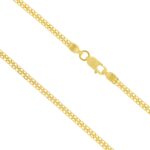Sweating excessively in daily life can be both uncomfortable and embarrassing. For those struggling with hyperhidrosis, a common and frustrating condition that causes overactive sweat glands, a popular question often arises: Is Botox a permanent solution for sweating? While Botox injections offer substantial and long-lasting relief, the effects are temporary, not permanent. However, with regular maintenance, many individuals experience sustained results that significantly improve their quality of life.
What is treatment and how it works?
Botox for Sweat Glands in Dubai(البوتوكس للغدة المتعرقة في دبي), also known as Botox for hyperhidrosis, involves the use of botulinum toxin type A to block nerve signals that stimulate the eccrine sweat glands. These are the glands responsible for most of the body’s sweat production. By temporarily paralyzing these nerves, Botox significantly reduces sweat output in the treated area.
Here’s how it works:
-
Botox is injected directly into the skin of the affected region
-
It binds to nerve endings, stopping the release of acetylcholine, the chemical that activates sweat glands
-
Within a few days, sweat production drops noticeably
-
Results typically last between 4 to 6 months, after which repeat treatments are needed
So, to answer the core question—is Botox a permanent solution for sweating—the short answer is no, but it is highly effective for temporary management.
Importance of treatment:
For people dealing with primary focal hyperhidrosis, especially in areas like the underarms, hands, feet, or scalp, the impact of excessive sweating goes far beyond physical discomfort. It affects daily life and emotional well-being in a variety of ways:
-
Embarrassing sweat patches on clothing
-
Constant need to change clothes or carry absorbent materials
-
Social anxiety and withdrawal from public settings
-
Compromised work performance due to sweaty palms or visible dampness
In many cases, traditional antiperspirants and lifestyle changes fail to offer relief. That’s where Botox treatment for sweating becomes essential—by targeting only the areas affected and offering predictable, localized sweat reduction. Even though Botox isn’t permanent, its consistent performance and minimal side effects make it a preferred option.
Types of treatment:
Different areas of the body may require a customized approach when using Botox to treat excessive sweating. The most common treatment zones include:
Botox for underarm sweating
-
FDA-approved and highly effective
-
Lasts 4–6 months on average
-
Typically requires 10–15 injections per underarm
Botox for hand sweating
-
Helps with sweaty palms interfering with writing or handshakes
-
May involve temporary muscle weakness
-
Numbing cream often applied before treatment
Botox for feet
-
Controls moisture in soles of feet
-
Can improve comfort in shoes and prevent infections
-
May require more injections than other areas
Botox for scalp or facial sweating
-
Targets specific zones like forehead, temples, or hairline
-
Useful for those affected by craniofacial hyperhidrosis
-
Requires skill for natural-looking results
Each type of treatment varies in terms of dosage, depth of injection, and patient experience, but the outcome is consistent—temporary sweat reduction. Therefore, if you’re asking is Botox a permanent solution for sweating, it’s important to understand that periodic sessions are necessary to maintain results.
Preparation:
Preparing for a Botox hyperhidrosis session is simple and straightforward but contributes to smoother treatment and optimal outcomes. Here’s what to keep in mind before your appointment:
-
Avoid shaving the treatment area (especially underarms) for 24–48 hours
-
Skip using deodorants, creams, or lotions on the day of your session
-
Stay hydrated and relaxed
-
Wear loose, breathable clothing to minimize irritation post-treatment
In some cases, a starch-iodine test may be performed to map out the exact sweat zones that need treatment. This ensures Botox is injected precisely where it’s needed for maximum sweat suppression.
Aftercare:
Although Botox injections for sweating are minimally invasive, following proper aftercare can extend results and prevent side effects:
-
Avoid vigorous activity or exercise for 24–48 hours
-
Do not massage or rub the treated area
-
Refrain from applying deodorant or antiperspirants for at least 24 hours
-
Stay out of hot environments like saunas or steam rooms for a couple of days
Side effects like redness, bruising, or mild swelling may occur but usually resolve quickly. The treatment has no real downtime, and most people return to work or social activities immediately.
Again, while Botox doesn’t offer a permanent fix, its convenience and low-recovery nature make it one of the most practical solutions available for controlling excessive sweating.
Ideal candidate:
Botox for sweating is not for everyone, but most adults who experience localized excessive sweating that isn’t controlled by topical treatments are good candidates. You may benefit from Botox if you:
-
Struggle with primary focal hyperhidrosis
-
Experience excessive sweating in specific areas
-
Have not found relief with prescription antiperspirants
-
Want a safe, non-surgical treatment with temporary but consistent results
-
Are not allergic to botulinum toxin or suffering from certain neuromuscular disorders
Since Botox treatment isn’t permanent, it appeals especially to those who want to test out a non-invasive option before considering more drastic steps like surgery.
How to choose the right clinic?
Choosing the right place for Botox sweat gland treatment plays a big role in the experience and outcome. Look for:
-
Professionals experienced specifically in treating hyperhidrosis
-
Clear information about the procedure and aftercare
-
Proven patient satisfaction and visible results
-
A hygienic and welcoming environment
-
Transparent communication about results, expectations, and timelines
A well-qualified provider will not only answer all your questions but will also ensure your treatment is safe, tailored, and maximally effective—even though Botox for sweating is not a permanent solution, the right provider ensures it feels close to one.
Risks:
Though Botox is FDA-approved for underarm sweating and widely used in other areas, there are still some potential side effects and risks to keep in mind:
-
Minor pain, swelling, or redness at the injection site
-
Temporary muscle weakness (especially in hand or foot treatments)
-
Flu-like symptoms or headaches
-
Rare allergic reactions
These are typically mild and short-lived, and serious complications are extremely rare. Most patients experience no downtime or complications and are satisfied with the noticeable sweat reduction.
Benefits:
Despite its temporary nature, the benefits of Botox for Sweat Glands(البوتوكس للغدة المتعرقة) are significant:
-
Reduces sweat up to 80% in treated areas
-
Improves social confidence and daily comfort
-
Prevents clothing stains and skin infections
-
Fast, non-surgical, and requires minimal recovery
-
Suitable for various sweat zones: underarms, palms, soles, face
-
Long-lasting with regular sessions
Botox’s ability to deliver dramatic, sweat-free results with quick appointments and minimal risk has made it one of the top options for hyperhidrosis sufferers worldwide.
FAQs:
Is Botox a permanent solution for sweating?
No. Botox temporarily blocks nerve signals to sweat glands and requires maintenance treatments every few months for continued effects.
How often will I need Botox for sweating?
Most people repeat treatment every 4–6 months, though some see longer results with repeated sessions.
Does Botox stop all sweating in treated areas?
It significantly reduces sweating, but you may still experience minor moisture during intense activity or heat.
Is the treatment painful?
The injections cause minimal discomfort, often described as a tiny pinch. Numbing agents can be used.
Can I go back to work right after Botox?
Yes, most people resume normal activities immediately. There’s little to no downtime required.
Will I sweat more in other areas?
This is rare. Botox treats only the injected area and doesn’t force the body to compensate by sweating more elsewhere.
Conclusion:
So, is Botox a permanent solution for sweating? The honest answer is no—but it is a powerful, reliable, and temporary solution for those dealing with the burden of excessive sweating. While repeat sessions are required to maintain results, the convenience, effectiveness, and confidence it restores make Botox for hyperhidrosis a leading choice for individuals seeking freedom from constant moisture and discomfort. For those looking to take control without surgery or extended recovery, this is a sweat-management solution worth considering.












